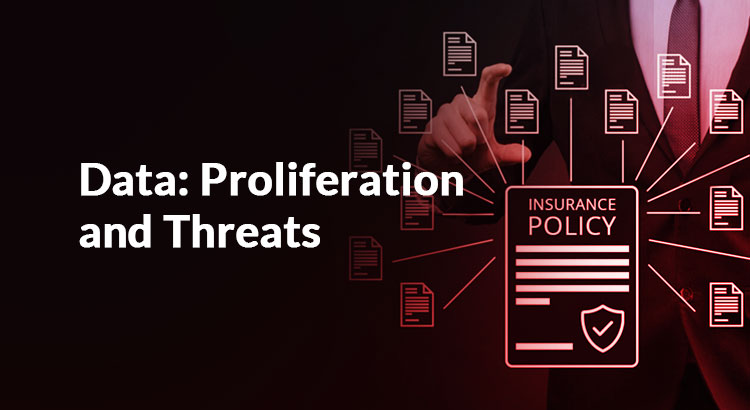The Context
Having risk preventive measures in place is better than reacting to cyber threats. The former approach enables organizations to build a robust IT infrastructure through a layered approach, building security shields at every level, such as network, devices, data, and users.
Nevertheless, cyber criminals are too sophisticated today and possess an uncanny ability to inflict damage by exploiting the security gaps at any point. That’s why cyber insurance is becoming important for today’s organizations.
Cyber Insurance is no longer an option, it is now mandatory. The adoption of sophisticated technologies for seamless IT operations has made organizations vulnerable to complex IT threats. Hence, the importance of cyber insurance is mounting.
In the past few years, data breach incidents have led to huge penalties and financial losses for organizations since regulatory compliance has been extremely stringent. In almost every industry, we find that large and mid-scale organizations have faced big financial penalties for non-compliance or sometimes loopholes in the compliance standards. That is why demand for cyber insurance has been at an all-time high in the last couple of years.
The Reasons Behind Urgent Need to Have Cyber Insurance
Proliferation of Data: The total volume of data generated, captured, copied, and accumulated globally till 2020 is 64.2 zettabytes (as per our market research). Global data volume is expected to reach 180 zettabytes by 2025.In spite of the COVID-19 pandemic, the research analysts strongly anticipate that it might grow more than the figure mentioned as digitalization has been adopted by every industry.
Many people have worked remotely in the last couple of years, and organizations adopted new data storage methodologies to manage data. Cloud storage is the most obvious of them all. Since 2020, adoption of cloud computing and the shifting of IT operations to cloud environments has grown by 36% annually.
With a significant amount of data generated across applications and amid an increasing number of users spread across multiple cloud platforms and hybrid data center environments, the challenge of protecting the data has increased.
Increasing Attacks on Business-Critical Data: As the volume of data generated is growing, the security of that data has become highly critical. According to a report by The Economic Times, there were nearly 8.7 crore data breach incidents across the world in 2021.
Malicious insiders and suspicious third-party users are the major reasons behind the increase in data breaches worldwide. Many insiders, especially users with elevated rights to applications, databases, and other forms of sensitive information, are typically aware of what and where the critical data is generated and stored.
The threats have increased in hybrid work conditions, and it takes a lot of time to realize and identify that a data breach has occurred.
According to Forbes, 49% of organizations agreed that it takes an average of one week to identify insider attacks, which worsens the situation. At the same time, third-party users, especially managed service providers (MSPs), software (or other equipment) vendors or business consultants, have increased alarmingly. Organizations appoint them for ease of work and allow them to access many sensitive data assets. As a result, confidential business data gets compromised.With the uncontrolled growth of data, the concern for data security is also intensifying among IT security leaders.
Stringent Global Compliance Framework: Regulatory compliance (both global and regional) is getting increasingly stringent. While non-compliance with regulations, in the case of a breach, leads to massive financial losses, any organization that is not compliant with the global information security standards such as the GDPR, RBI Guidelines, NIST, FedRAMP, SOC2, PCI-DSS, HIPAA, SOX, etc., then there are chances that the cyber insurer might reject the organization’s insurance coverage application.
Analysis & Recommendation: Cyber insurance covers cyber risks with a highly competitive monetary margin. In the case of massive data breaches, organizations might not always have adequate resources or finances to recuperate the losses. That is when cyber insurance is required as it can offer all the financial support and does not allow any kind of disruption in the business process.
However, at the same time, if organizations are lackadaisical towards data protection and data security measures, then they might end up paying higher insurance premiums.
ARCON recommends the deployment of robust Privileged Access Management (PAM) and Identity Access Management (IDAM) solutions to address the data security challenges mentioned earlier. These solutions not only strengthen cyber defense but also help lower premiums by assisting in compliance with a variety of IT regulations. Some of the benefits include:
- Ensuring authorized access to the critical systems and data assets
- Seamlessly monitoring of privileged sessions to ensure that there are no anomalies around the confidential business data
- Implementation of the ‘Least Privilege’ principle and reinforces the Just-In-Time privilege solution
- Ensuring flexibility and scalability in on-prem, remote and IaaS/ PaaS/ SaaS infrastructure
- Building the foundation for the ‘Zero Trust’ network security (ZTNA) framework
Conclusion
The proliferation of data and data security threats in every industry has increased the importance of cyber insurance. ARCON adds value to organizations by reinforcing best IT security practices with the help of its robust information security solutions.

